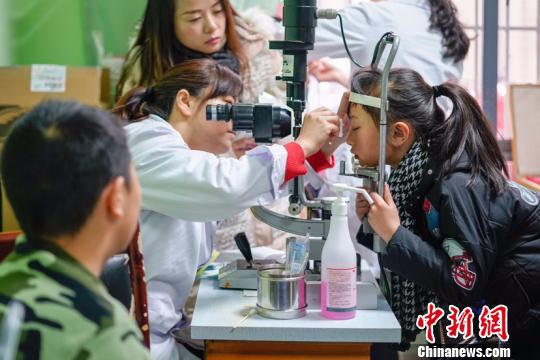Over half of Chinese youth myopic
 0 Comment(s)
0 Comment(s) Print
Print E-mail Xinhua, April 30, 2019
E-mail Xinhua, April 30, 2019

More than half of Chinese children and teenagers suffered from nearsightedness (myopia) in 2018, according to the National Health Commission (NHC).
Nearsightedness among Chinese teenagers has become severe in recent years as they are affected at a younger age, an NHC official Zhang Yong told a press conference on Monday.
The prevalence of intense myopia has also become alarming as the percentage of senior students in high schools who wear glasses stronger than six diopters rising to 21.9 percent.
Zhang said that the misuse of eyes, such as insufficient outdoor exercise, inadequate sleep time, excessive homework and near-vision work and abuse or improper use of electronic devices, were the main causes of the high myopia rate.
Nearsightedness is not curable with current medical techniques, making prevention important.
Experts suggest that children and teenagers should exercise outdoors for two hours a day, or 10 hours per week, and reduce their amount of near-vision work, as well as use of cellphones and computers.
China rolled out a scheme last year to curb the rise in nearsightedness among children and teenagers. The scheme, jointly issued by the Ministry of Education, the National Health Commission and six other departments, aims to keep myopia rate among six-year-olds at around 3 percent by 2030, and the rate among junior and senior high school students below 60 percent and 70 percent respectively.






Go to Forum >>0 Comment(s)